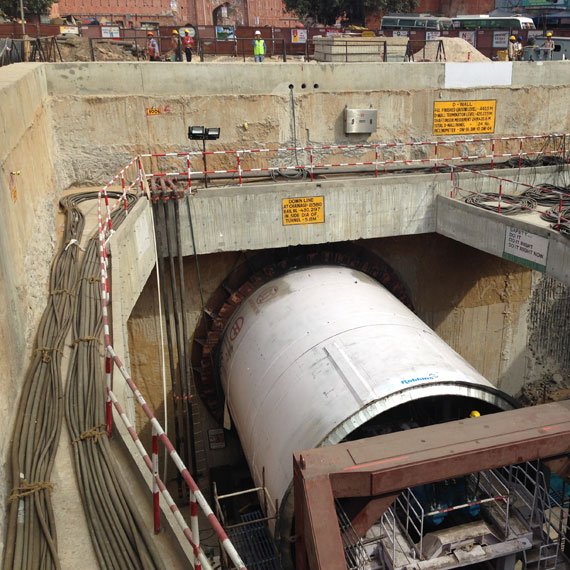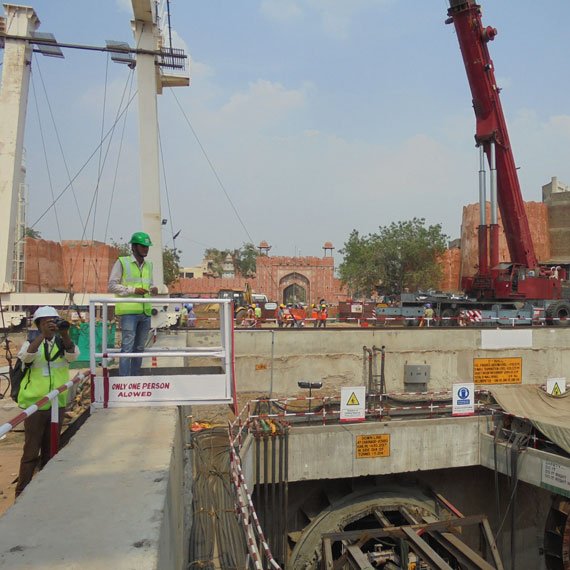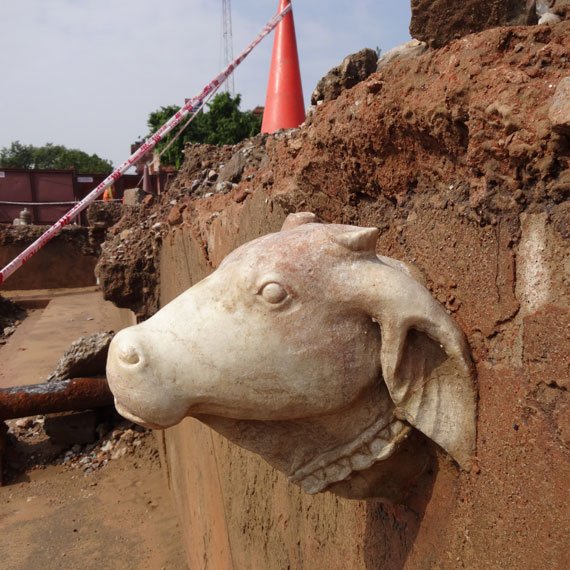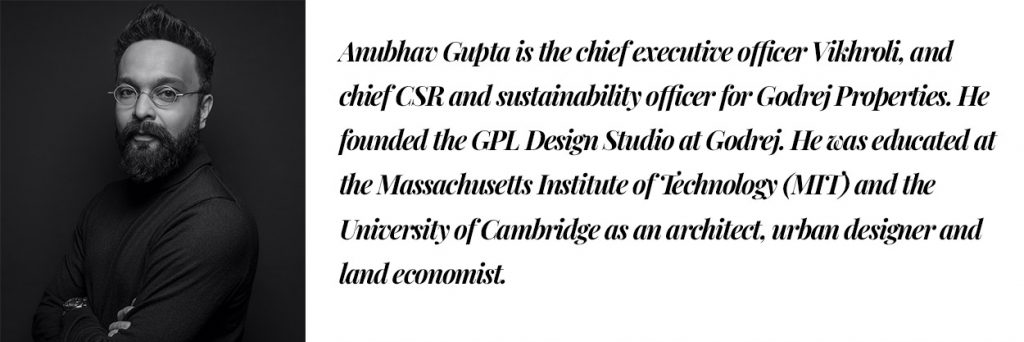I am delighted to be talking to Abha Narain Lambah, one of India’s best known names in the world of heritage and conservation architecture for ninth episode of the Those Who Design series. With an impressive body of work all across the country, Abha’s passion and zeal for her craft is palpable from the moment we got talking. I was intrigued with her choice of project for our discussion — The Jaipur Metro. It all makes very good sense as our conversation unfolds, with an evolving narrative and thoughtful subsequent developments. Although I had some initial thoughts for enquiry on the project, we did not get to critically examine it owing to time spent on the interesting story of its evolution. Perhaps we will return to it in another exciting conversation.
The genesis of the project
Responding to my intrigue, Abha explains that the Jaipur Metro project mandated tunnelling under and across the old walled city, set in a desert region with fragile invaluable masonry heritage buildings (of World Heritage status) generously scattered on the ground above. To deliver on this responsibility laid the impetus for an audit on the project by its funders, the Asian Development Bank. Along with structural consultants SMA, Abha’s firm was invited to conduct the audit and study the implications of the boring/tunnelling on the heritage city’s historic fabric. By meticulously studying each building along the stretch of the guideway, Abha explains that they first identified vulnerable buildings which may have even have fallen even without tunnelling and subsequently those structures that may be susceptible to damage owing to vibration and the underground work. She also takes pride in sharing that they came up with an intensely calibrated crack monitoring system which enabled them to audit real time as the tunnelling machine made its way under the bazaar from the Chandpol gate to Surajpol setting off alarm bells right across the Jaipur Metro chain of command right upto the Chief Minister’s office in case of exceeding the calibrated tolerances of just a millimetre of damage. She continues that the study helped inform the logical placement of the stations at the two chowks, Badi and Choti Chaupars.
Discoveries leading to conservation and project evolution
With an explorer’s enthusiasm on making a key discovery, Abha shares some photos of erstwhile stepwells or kunds that her team found from archival research situated on the two chowks from the 1870s which had later been converted to roundabouts. Clearly a pivotal point in the project, Abha took the onus to present two cases to the chief minister – one to tunnel right through the discovery as is the case in a lot of cities, or an alternative and empathetic consideration which brings the discovery to light, saving it, but for a fair redesign of levels, guideways etc. at a late stage in a capital project of such large undertaking. She describes her reaction as being completely spellbound at the chief minister’s acceptance of a potential redesign and laying out a mission to save the kunds. Quickly getting back to their drafting boards to redesign the entire approach to the project and then opening up an archaeological survey site in the middle of the Jaipur Metro project seemed to me only fair as her description of a credible high point in this project. These are perhaps the moments that light up a room or capture anyone’s imagination for not only a great story but one with a potentially meaningful outcome. From there on, I liken Abha’s narrative to like her being in a candy shop, completely at home with her expertise of saving and bringing to light a heritage city’s erstwhile palimpsest.
Unravelling the story, Abha explains that the kunds were actually the city’s water reservoirs connected with a network of man-made subterranean waterways called qanats that brought rainwater from the nearby mountain lakes to the city in its royal era when there was no piped water supply. Sharing pictures of the marble ‘gaumukh’ spouts that fed the kunds which they found intact upon excavation, Abha shares that they documented each one prior to placing them at the Jaipur Albert Hall museum for safekeeping. The next layer of stepwell excavation at the Badi Chaupar revealed the base of a stucco fountain which was recreated along with each paving stone that was numbered as it was laid prior and assembled back on site after the stations were built thereby doing an anastylosis of the kund.

The Big moves
I asked Abha to verbalise the big design moves in an elevator pitch format to the chief minister which she corrected me by suggesting that the pitch was really to the people of Jaipur. Describing it as a siege by this tunnel boring machine which sat outside the city gates digging a big pit to then mole its way under the walled city, Abha gives us a sense of the fear and apprehension in the minds of citizens and some media articles prophesizing the crumbling fate of the old city as a result of the project. Describing it as a pertinent fear owing to the old buildings built on sand with shallow foundations as opposed to structures in most metros, Abha and her team took the time and effort to go from shop to shop and house to house dispelling the paranoia and giving confidence to the citizens on preserving their city and built fabric whilst adding to their mobility and convenience. Summarising this, she aptly states that in public projects, it is important to remember that the public is the client and that engagement with this client is key to success like any other project. On any mistakes and mishaps during the project, Abha shares that they had much anticipated criticism on any conceivable mistake even before project began – something that made them extra careful to ensure complete safety when it actually happened and to their relief without any untoward incident, a commendable testament to their robust preparation.

Spinning off one good project after another
Setting up almost a virtuous cycle, Abha lets us in on the spin offs of this wonderful project which keeps on giving. She describes the space between the underground platform concourse and the street above as an opportunity to experientially bring the traveller through the qanat into the kund, a space gap of about 25,000 sqft. that could become a little museum of Jaipur. Therefore underground a subterranean museum was created under the choti chaupar which housed archaeological artefacts collected and curated from all over Rajasthan almost as a showcase for the public to enjoy. Furthermore, she describes a third spin off in the form of the Jaipur illumination project which illuminated all the bazaars along the metro line and was aimed at regenerating evening activity for metro users, tourists, shop keepers and others post sundown when the climate is cooler. In my mind, such positive spin off momentum in design and value comes from courage to challenge status quo, course correct timely and be inclusive despite the hardship or challenges faced.


Jaipur, Rajasthan
The Role of Gender if any in practice
Stepping back from our chat on the project, Abha describes her college days at SPA in Delhi where there were more men to women from a gender ratio perspective. She is heartened to find that data point change over the years. She clarifies that she has never been discriminated due to gender nor has felt the need to use gender as an advantage or excuse to not face facts whilst in the profession. Being mindful of a pre-existing societal construct which may impact some owing to gender, Abha is privileged to have not come across these challenges. Her concern for the fact that there is a high dropout rate in women who may have studied architecture but do not continue with the profession in practice is pertinent. Owing to her positive experience and privilege, staying with the profession could pay rich dividends for the incumbent and the country at large. Hang in there! she advises with the need to take time off to start a family or equally to bring your child to work as she has done since her daughter was a toddler. To never give up! – a mantra Abha clearly lives by which is evident in her work, approach and for the value she and her team continues to conserve and create in their projects.
***

All images from www.anlassociates.com

